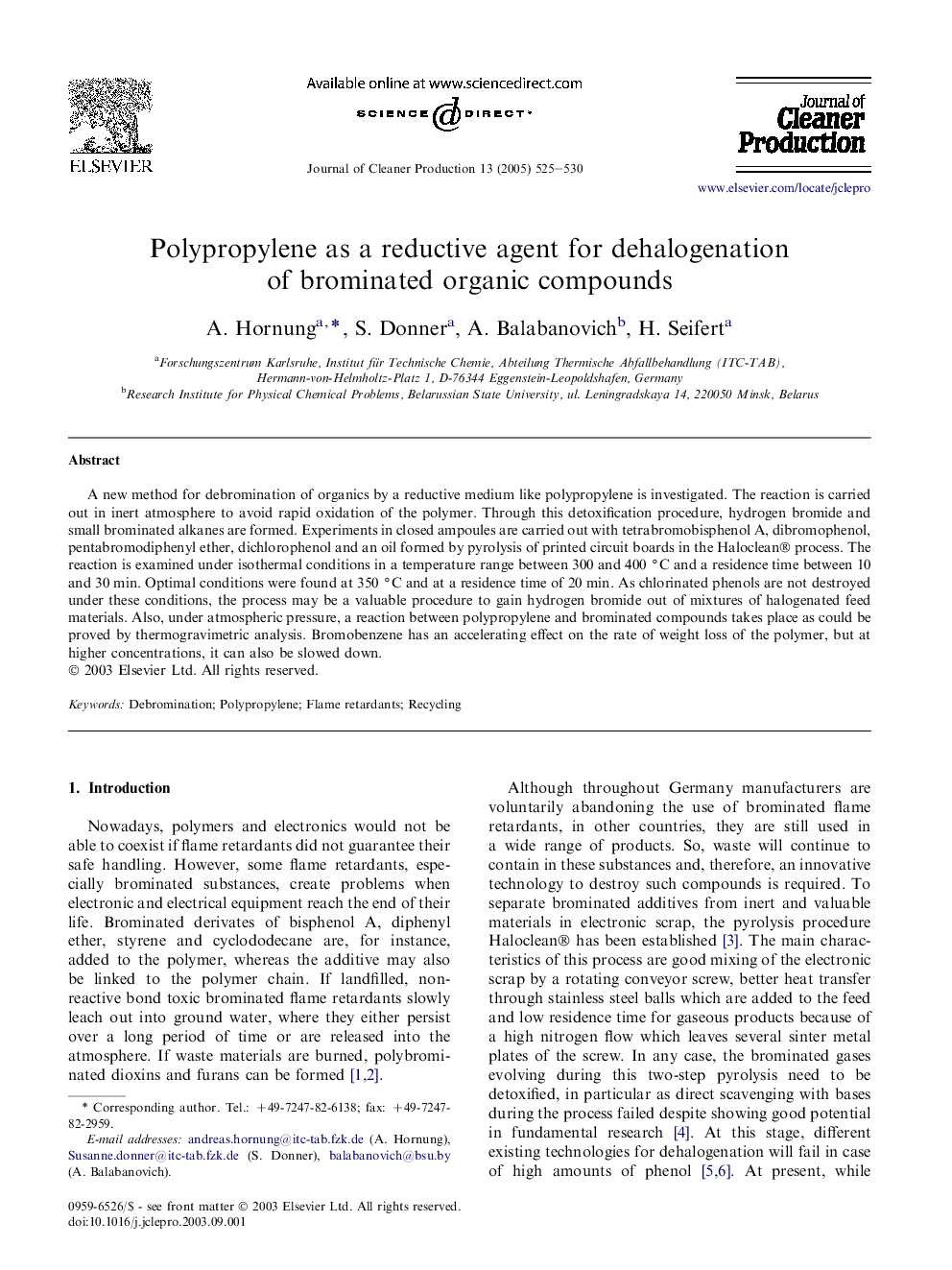| Article ID | Journal | Published Year | Pages | File Type |
|---|---|---|---|---|
| 10688513 | Journal of Cleaner Production | 2005 | 6 Pages |
Abstract
A new method for debromination of organics by a reductive medium like polypropylene is investigated. The reaction is carried out in inert atmosphere to avoid rapid oxidation of the polymer. Through this detoxification procedure, hydrogen bromide and small brominated alkanes are formed. Experiments in closed ampoules are carried out with tetrabromobisphenol A, dibromophenol, pentabromodiphenyl ether, dichlorophenol and an oil formed by pyrolysis of printed circuit boards in the Haloclean® process. The reaction is examined under isothermal conditions in a temperature range between 300 and 400 °C and a residence time between 10 and 30 min. Optimal conditions were found at 350 °C and at a residence time of 20 min. As chlorinated phenols are not destroyed under these conditions, the process may be a valuable procedure to gain hydrogen bromide out of mixtures of halogenated feed materials. Also, under atmospheric pressure, a reaction between polypropylene and brominated compounds takes place as could be proved by thermogravimetric analysis. Bromobenzene has an accelerating effect on the rate of weight loss of the polymer, but at higher concentrations, it can also be slowed down.
Related Topics
Physical Sciences and Engineering
Energy
Renewable Energy, Sustainability and the Environment
Authors
A. Hornung, S. Donner, A. Balabanovich, H. Seifert,
